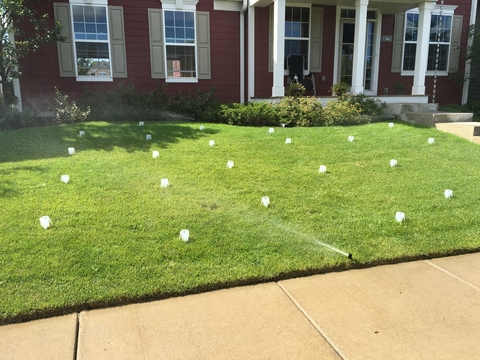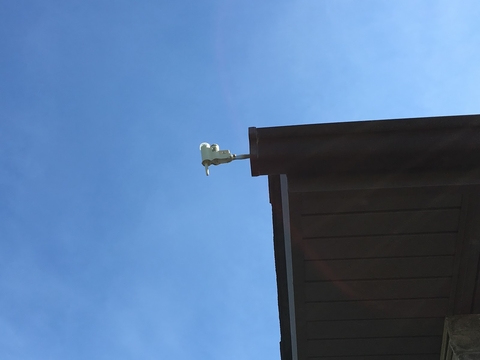If you own an irrigation system or water your lawn with portable sprinklers, reduce your overall water use by using these water-saving tips.
Pay attention to the weather
During a Minnesota summer, we may see heavy periods of rainfall followed by extended drought. Homeowners with lawns should adjust irrigation practices accordingly. This means no longer relying on the “set it and forget it” irrigation schedule that is often programmed into automatic systems.
Operating irrigation controllers in manual mode is one way to solve this issue: turn the controller on only when your lawn shows signs of drought.
Select lawn grasses that use less water and can tolerate drought
Whether you are establishing a new lawn or renovating an existing lawn, your choice of grass species will impact irrigation requirements.
- Traditional grass species for Minnesota include Kentucky bluegrass, perennial ryegrass, fine fescues and tall fescue.
- Fescue species offer the best drought tolerance.
- Fine fescues simply use less water, and tall fescue has a deep root system able to access more moisture.
Adjust irrigation programs to conserve water
To encourage rooting and drought tolerance, you should irrigate your lawn infrequently (one time or less per week) with a sufficient volume of water to wet soils to a depth of six inches, assuming no rainfall has occurred. Depending on your soil type, your lawn may only need as little as a half-inch of water.
Set irrigation programs to water during the morning hours. Watering during the heat of the day reduces the amount of water absorbed by the soil and made available to plants.
Audit your irrigation system
Auditing your irrigation system is a good step toward water conservation. Irrigation contractors will perform this service for you if you contract with them.
There are three basic steps:
Check system components including sprinklers, valves and controllers.
Conduct a performance test.
Program the controller.
For more information on conducting an irrigation audit, see Auditing home lawn irrigation systems.
Use water-saving technologies
Rain sensors connected to irrigation controllers are common water-saving devices. Over the past decade, “smart” irrigation controllers, soil moisture sensors and more efficient sprinklers have also been developed.
Smart irrigation controllers save water by automatically adjusting irrigation programs based on water use estimates or stored historical data. You also can buy inexpensive ($150 or less) soil moisture sensors to embed into your lawn. These sensors will not allow an irrigation system to run if soil moisture levels are adequate.
Many municipalities offer rebates (as much as $250) for installing these smart irrigation devices on your home irrigation system.
Improve soils and lawn quality through good maintenance
Your lawn care practices have a direct impact on irrigation requirements. High mowing heights (3 inches or greater) and proper fertilizer use will improve lawn quality and reduce irrigation requirements.
Aerating your lawn followed by top-dressing with quality compost can lessen compaction and add organic matter to soil. This will improve water infiltration in heavy soils, as well as increase the moisture-holding capacity of sandy soils that drain rapidly.
Recycle water when possible
Recycling water for irrigation requires proper design of water storage and separation to supply the water to irrigation sprinklers. Professional contractors who have expertise in this area have designed these systems for large commercial buildings and sports complexes. You can buy rain barrels from local municipalities and companies to reuse rainwater to irrigate your landscape plants.
Change expectations
Consider changing your lawn expectations to allow for temporary discoloration during drought periods. It is very rare to have extended droughts that completely compromise the integrity of a lawn.
Design landscapes for water conservation
Choose plants that are well-suited to your site including drought-tolerant plants for dry areas. Mulch garden beds to retain soil moisture and reduce weeds. Retain water on-site using rain barrels, rain gardens, and planted slopes.
Reviewed in 2022





